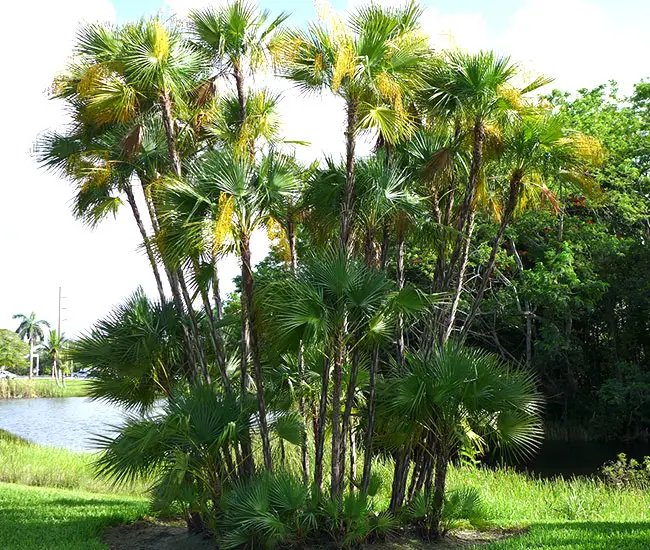
The Paurotis Palm Tree, scientifically known as Acoelorrhaphe wrightii, is a native palm species primarily found in the southeastern United States and throughout the Caribbean.
It is commonly known as the “Everglades palm” or “Silver saw palmetto” due to its distinctive silver-colored fronds. This palm tree typically grows in wet and swampy habitats, making it well-suited for areas with high water tables.
Paurotis palms are relatively small, growing up to 15-20 feet in height, and they have fan-shaped fronds with toothed edges.
Generally, it is considered a relatively cold-hardy palm compared to some other tropical species. Mature Paurotis Palms can typically withstand brief periods of temperatures as low as 20 to 25 degrees Fahrenheit (-6 to -4 degrees Celsius) without significant damage.
Quick Facts:
| Scientific name: | Acoelorrhaphe wrightii |
| Common names: | Paurotis Palm, Everglades Palm, Silver Saw Palmetto Palm. |
| Origin: | Native to southern Florida. |
| Growth Rate: | Slow. Up to 20 ft tall and 5 -10 ft wide. |
| Cold Tolerance: | USDA Zones 9b (25 to 30 F) to 11 (above 40 F). |
| Light Req: | Partial shade to Full sun. |
| Water Req: | Moderate. |
| Soil Req: | Widely adaptable. |
| Fruit: | Yes. Black. Not edible. |
| Propagation: | Be seed, germinating in 2-3 months. Division. |
Paurotis Palm Appearance
Paurotis Palm has a distinct appearance that sets it apart from other palm species. This palm typically grows as a clustering or multi-stemmed palm, often forming small clumps of several trunks.
It can grow to a height of about 15 to 20 feet (4.5 to 6 meters). The trunks of the Paurotis Palm are relatively slender and covered with old leaf bases, giving them a somewhat rough and fibrous texture. These trunks are typically a light grayish-brown color.
The palm’s fronds are fan-shaped and can measure up to 4 to 5 feet (1.2 to 1.5 meters) in length. They have a distinctive silver-green color, which is why it’s sometimes referred to as the “Silver saw palmetto.” The fronds are deeply divided into multiple segments and have serrated or toothed edges.
Flowers and Fruits of the Paurotis Palm
The Paurotis Palm produces small and inconspicuous flowers and round fruit. The flowers of this palm are typically cream-colored or yellowish and are borne on long stalks. While not particularly showy, these flowers play a role in pollination by attracting various insects.
The fruit of the Paurotis Palm is round and measures about 0.5 to 0.75 inches (1.3 to 2 centimeters) in diameter. When ripe, these fruits turn black.
While they are not generally consumed by humans, they are an essential food source for wildlife in their native habitats. Various birds and animals feed on the palm’s fruit, contributing to its ecological importance in the Everglades and other wetland environments where it grows.
Caring for the Paurotis Palm
This palm can reach heights of 20 to 30 feet and a width of 5 to 10 feet. It exhibits cold tolerance down to 25°F, making it suitable for USDA Zones 9b (25 to 30°F) through 11 (above 40°F).
Ideally, it thrives in either partial shade or full sun. This versatile palm can withstand both standing water and drought conditions.
To prevent nutritional deficiencies, it’s advisable to apply a high-quality palm fertilizer with a continuous-release formula twice a year during the growing season.
Propagation can be achieved through seeds or division, though it’s worth noting that germination may take 2-3 months and requires a warm environment.
Paurotis Palm Tree Pictures
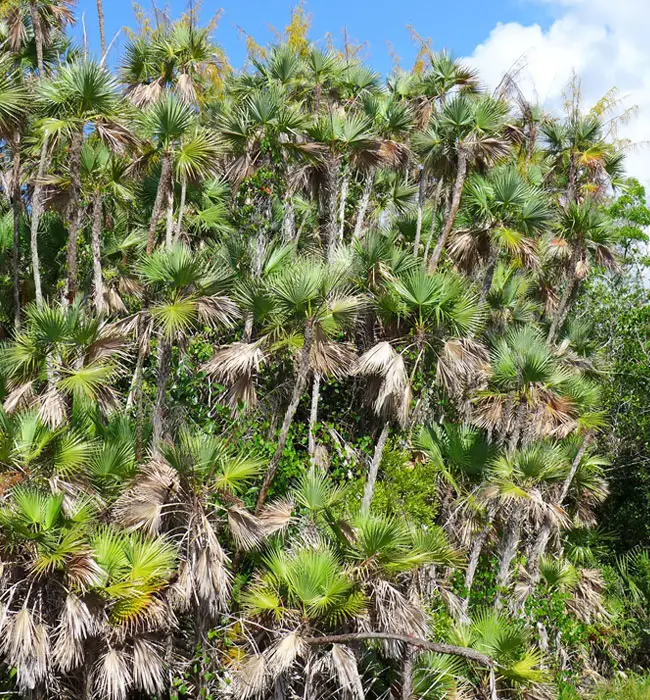
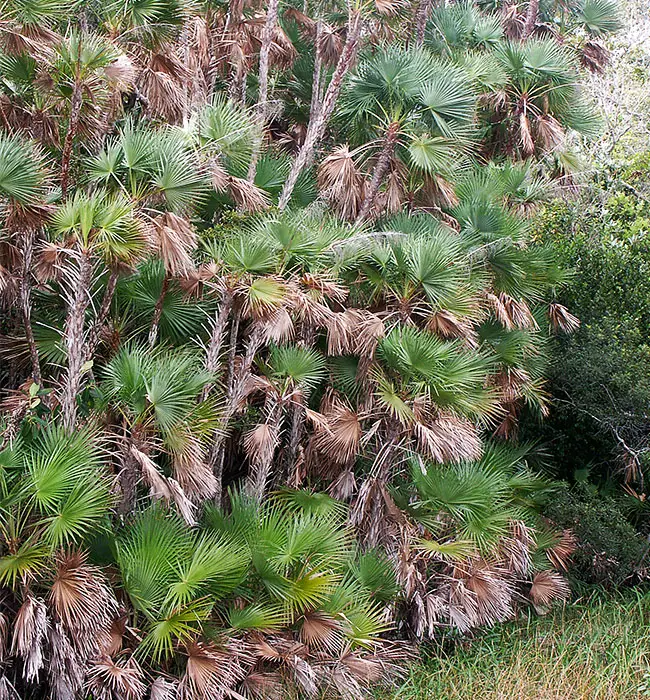
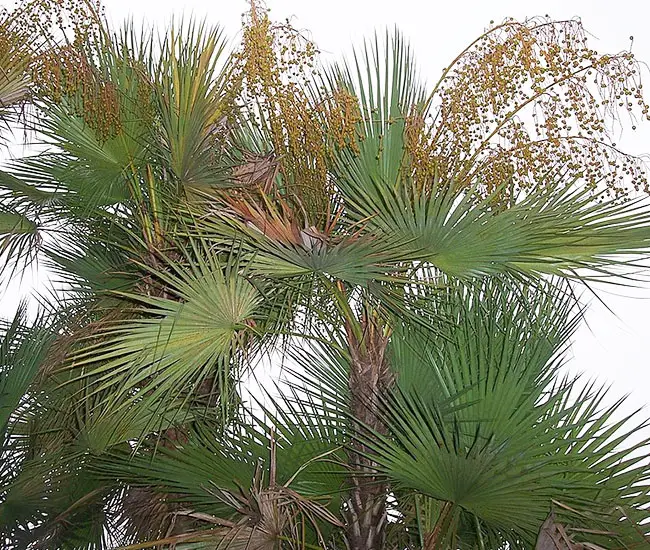
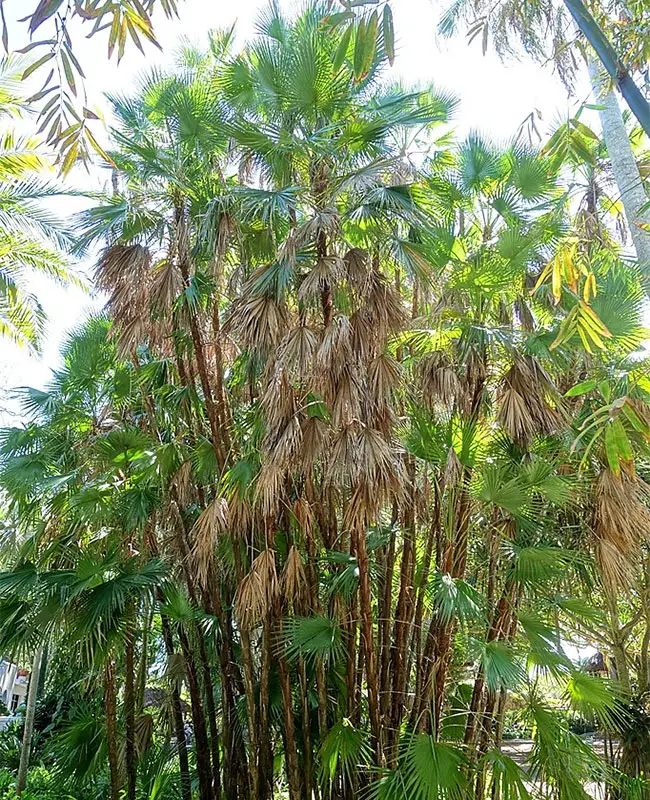
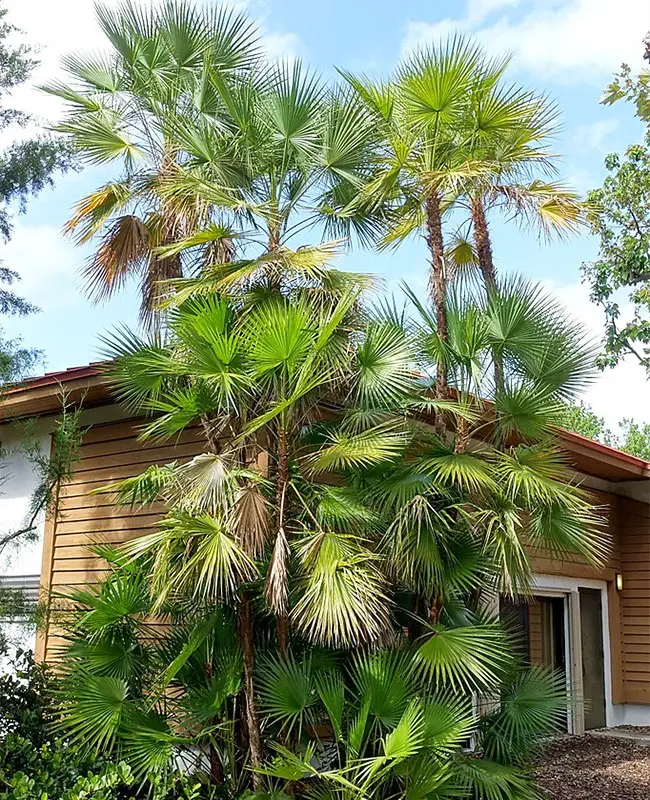
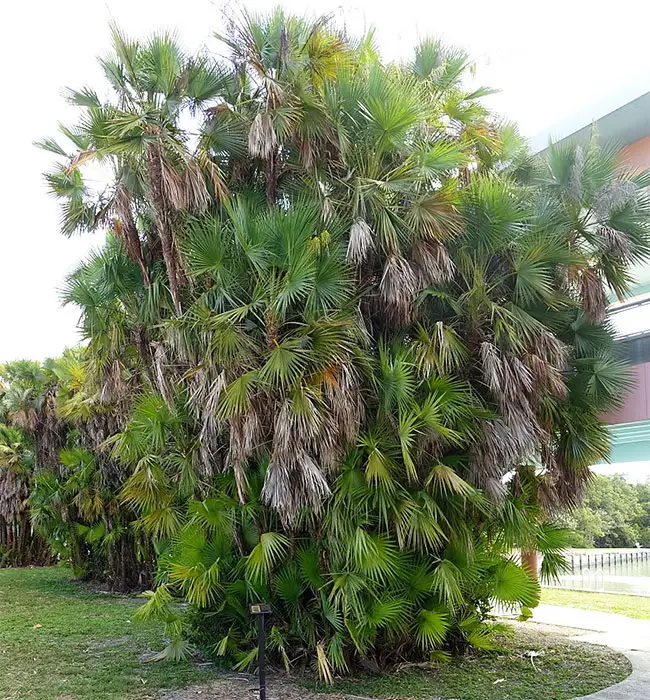
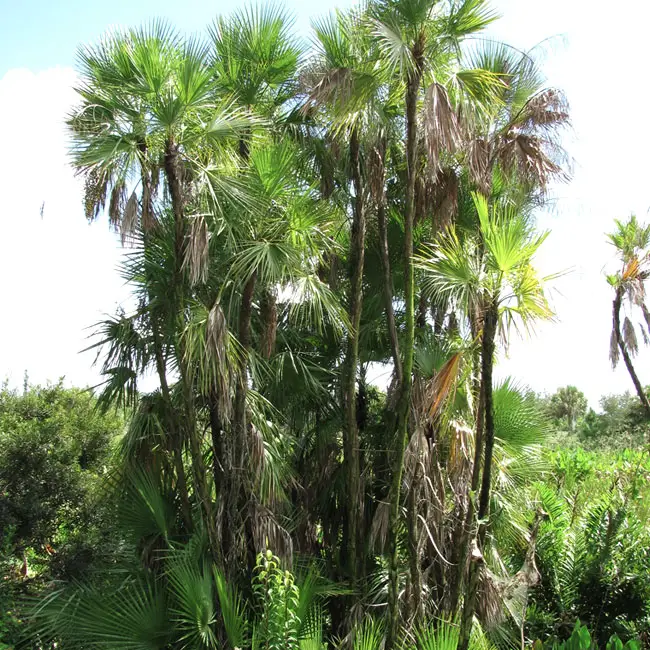
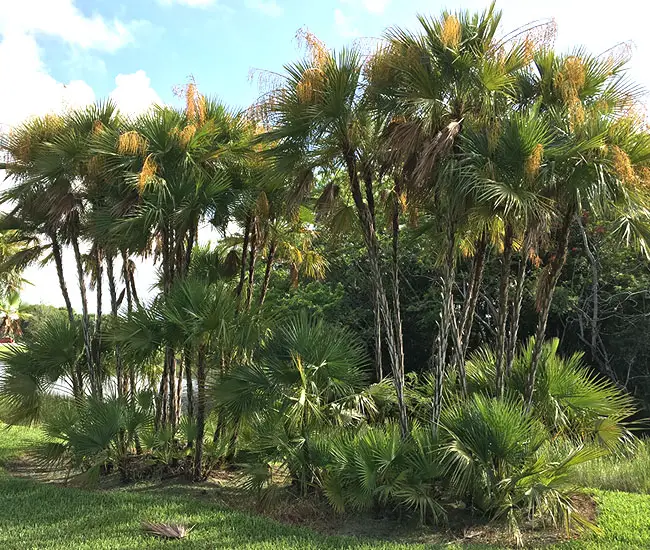
More information can be found on EDIS and Floridata sites.

If you cut say the top 6-8 feet off the top of a pair Otis palm will it start to regrow at the top.